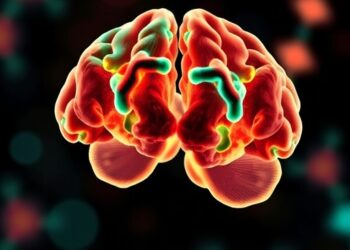In the relentless pursuit to unravel the deepest mysteries of neurodegenerative disorders, recent research has pivoted around one intriguing query: can the mundane act of walking daily actually foreshadow the onset of Parkinson’s disease? A groundbreaking study leveraging the immense dataset of the UK Biobank has illuminated this very link, presenting findings that might redefine how we perceive physical activity’s role in Parkinson’s diagnosis and risk assessment. Published in npj Parkinson’s Disease, the work spearheaded by Acquah, Creagh, Hamy, and colleagues explores the complex relationship between daily step counts and Parkinson’s disease, revealing nuanced insights that challenge prevailing assumptions.
Parkinson’s disease, a progressive neurodegenerative condition characterized by motor symptoms such as tremors, rigidity, and bradykinesia, affects millions worldwide. Its etiology remains partially understood, with genetics, environmental factors, and lifestyle habits all believed to play contributory roles. Traditional epidemiological studies have often sought to link physical activity levels with disease risk, hypothesizing that active lifestyles may mitigate the onset or progression of Parkinson’s. However, the advent of wearable technology and large-scale health databases like the UK Biobank has provided scientists unprecedented means to objectively quantify daily movement patterns and correlate them with long-term health outcomes.
The UK Biobank, a massive repository featuring detailed health and genetic information from half a million participants across the United Kingdom, serves as a treasure trove for such epidemiological investigations. In this study, researchers accessed accelerometer data capturing participants’ daily step counts, offering a precise measurement of ambulatory activity over prolonged periods. This objective data source surpasses traditional self-reported measures prone to recall bias and inaccuracies, allowing for robust analytical scrutiny of whether daily steps can serve as a biomarker indicative of Parkinson’s.
Upon detailed analysis, the research team discovered a compelling predictive association: individuals who eventually developed Parkinson’s tended to have lower average daily step counts well before clinical diagnosis. This trend suggests that subtle declines in motor function, manifesting as reduced spontaneous movement, may precede the overt onset of Parkinson’s symptoms by significant margins. Such prodromal motor decline is logical given the disease’s hallmark degeneration of dopaminergic neurons within the substantia nigra, which orchestrate voluntary movement.
However, the study’s most pivotal revelation nuances this relationship further. Although reduced daily steps appear predictive of Parkinson’s disease, the research argues that lower physical activity is more likely a prodrome or early manifestation rather than a causal risk factor. In other words, it may not be that inactivity increases the risk of Parkinson’s, but rather that incipient disease pathology subtly curtails patients’ mobility before diagnosis. This distinction is paramount in reframing physical activity’s role from preventative to prognostic within Parkinson’s disease paradigms.
The methodology underpinning these insights involved rigorous longitudinal tracking of step counts paired with medical records confirming Parkinson’s diagnoses. Statistical models adjusted for confounding variables such as age, sex, comorbidities, and medication usage, reinforcing the validity of detected associations. Moreover, the investigators employed sensitivity analyses excluding participants with diagnosed movement disorders at baseline to ensure that observed step count reductions were not artifacts of preexisting clinical disease.
Crucially, the study’s implications transcend mere academic curiosity. Identification of daily step count as a non-invasive, easily obtainable digital biomarker heralds a new frontier in early disease surveillance and risk stratification. Wearable accelerometers, now ubiquitous in consumer electronics, could be harnessed within clinical frameworks to monitor at-risk populations, enabling earlier interventions and tailored management strategies. This approach aligns seamlessly with precision medicine’s ethos of individualized care based on continuous, real-world data streams.
Furthermore, these findings catalyze fresh inquiries into the biological underpinnings linking motor decline and neurodegeneration. It prompts investigation into how early neuronal dysfunction translates into behavioral phenotypes detectable via everyday activity monitoring. Could combining step count variability with other biometric parameters — such as gait speed, tremor episodes, or heart rate fluctuations — amplify predictive accuracy? The nexus of digital phenotyping and neurodegenerative disease research stands poised for transformative breakthroughs.
Paradoxically, while promoting physical activity remains a cornerstone of general health recommendations, its direct influence on modifying Parkinson’s disease risk might be less straightforward than previously believed. This challenges simplistic public health narratives encouraging movement solely as a protective tactic against neurodegeneration, instead underscoring that low step counts might be a red flag warranting neurological evaluation.
The UK Biobank dataset, with its vast participant pool and multimodal data streams, exemplifies the power of population-scale health informatics in dissecting complex disease architectures. As the repository continues to accrue richer longitudinal data, future studies will likely refine prognostic models incorporating genetic, environmental, and lifestyle variables alongside digital phenotypes like step counts to sculpt comprehensive Parkinson’s risk profiles.
In clinical research contexts, implementation of step count monitoring could fatally depend on standardizing data collection protocols, addressing privacy concerns, and developing clinician-friendly interpretive tools. However, these challenges are surmountable through collaborative interdisciplinary efforts bridging neurology, bioinformatics, behavioral science, and digital technology development.
Taken in context, these revelations advance our grasp of Parkinson’s disease, not as a monolithic clinical endpoint but a dynamic process unfolding subtly over years. The ability to predict its trajectory through everyday biomechanics captured en masse heralds a paradigm shift. This study by Acquah and colleagues underscores the potential of leveraging digital health data to move beyond reactive diagnosis toward proactive, early-stage detection and intervention.
As these findings enter public and professional consciousness, they carry a potent message: our daily movement patterns—painstakingly chronicled by seemingly mundane steps—reflect the complex interplay of neurobiology underlying Parkinson’s disease. Recognizing this interplay reshapes not only scientific inquiry but also paves the way for innovative healthcare strategies grounded in continuous, real-world health monitoring, thus illuminating new avenues for combating one of the most challenging neurodegenerative diseases of our time.
Subject of Research: Parkinson’s Disease and Daily Step Count as a Predictive Biomarker
Article Title: Daily steps are a predictor of, but perhaps not a risk factor for Parkinson’s disease: findings from the UK Biobank
Article References: Acquah, A., Creagh, A., Hamy, V. et al. Daily steps are a predictor of, but perhaps not a risk factor for Parkinson’s disease: findings from the UK Biobank. npj Parkinsons Dis. (2025). https://doi.org/10.1038/s41531-025-01214-6
Image Credits: AI Generated











